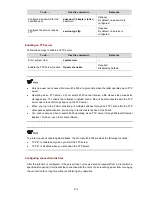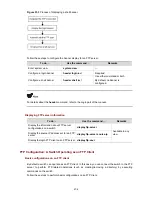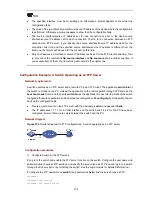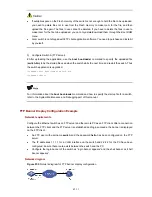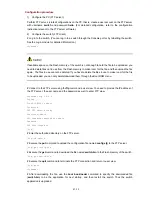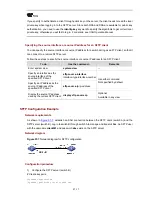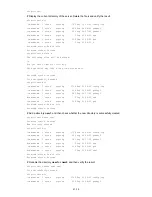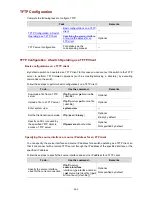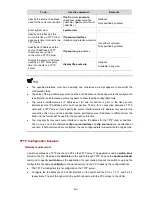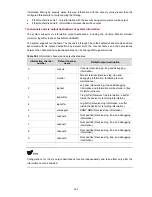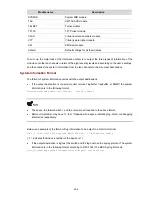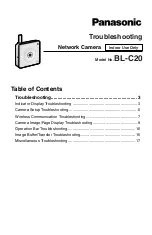
To do…
Use the command…
Remarks
sftp
{
host-ip | host-name
}
[
port-num
]
[
identity-key
{
dsa
|
rsa
} |
prefer_kex
{
dh_group1
|
dh_exchange_group
} |
prefer_ctos_cipher
{
3des
|
des | aes128
} |
prefer_stoc_cipher
{
3des
|
des | aes128
} |
prefer_ctos_hmac
{
sha1
|
sha1_96
|
md5
|
md5_96
} |
prefer_stoc_hmac
{
sha1
|
sha1_96
|
md5
|
md5_96
} ] *
Required
Support for the 3des keyword
depends on the number of
encryption bits of the software
version. The 168-bit version
supports this keyword, while
the 56-bit version does not.
Enter SFTP client view
Change the working directory
on the remote SFTP server
cd
pathname
Change the working directory
to be the parent directory
cdup
Display the working directory
on the SFTP server
pwd
Optional
Create a directory on the
remote SFTP server
mkdir
pathname
Remove a directory on the
remote SFTP server
rmdir
pathname
delete
remotefile
Optional
Delete a specified file
Both commands have the same
effect.
remove remote-file
dir
[
-a
|
-l
] [
remote-path
]
Optional
If no file name is provided, all
the files in the current directory
are displayed.
Query a specified file on the
SFTP server
ls
[
-a
|
-l
] [
remote-path
]
The difference between these
two commands is that the
dir
command can display the file
name, directory as well as file
attributes; while the
Is
command can display only the
file name and directory.
Download a remote file from
the SFTP server
get
remotefile
[
localfile
]
Upload a local file to the
remote SFTP server
put
localfile
[
remotefile
]
Optional
rename
Rename a file on the remote
server
-
remote source
remote-dest
bye
Exit SFTP client view and
return to system view
The three commands have the
same effect.
exit
quit
Display the online help about a
specified command
concerning SFTP
help
[
all
|
command-name
]
Optional
57-16


